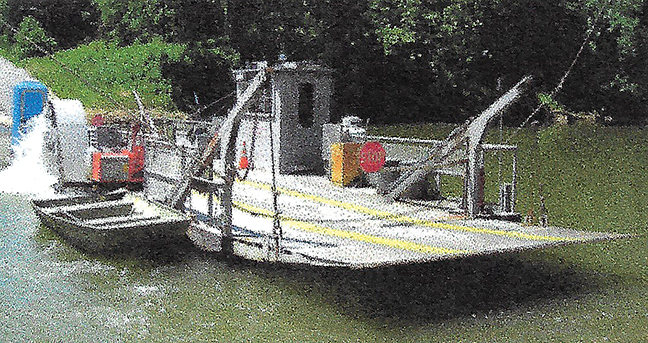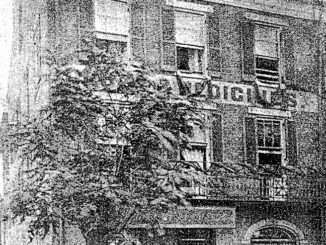
TRAVELING! Oh what a blessed opportunity! After weeks of masks, death reports, lockdowns, closures and a wealth of such confining experiences, the ideas of visiting, enjoying mass events with others and “taking to the roadway and the skies” are music to our ears. It’s not that the past year and a half did not present renovations, closer family sharing, medical breakthroughs and other advances to our culture, but the inherited concept of free personal rights stirred our souls. We treasure but often take for granted such basic rights made possible to us by generations of Americans who stood for liberty and justice.
There are so many opportunities in 2021 for individuals to adventure away from home. There is the familiar travel by air, by sea or by land but so many other choices: flight by sky diving, by balloon trips, soaring across the ravines by riding in a seat attached to a wire, or even walking across single-path escape routes across rivers or simply climbing a challenging mountain. Traveling is once again enticing.
To the early settlers of South Central Kentucky, travel options were limited. Hiking or riding an animal over Indian trails were still a challenge. Traveling in a covered wagon with one’s life possessions over well-worn and established traces marked by earlier explorers was most preferred. If a waterway was the route of choice, steamers, rafts and boats of all sizes could be chosen. Since travel across land was the most common, travel across waterways became a concern.
Often a pioneer who laid claim to land near a river would make possible aide to other travelers along their trace by providing a raft to cross the waterway. Andrew McFaddden did just that. He established the first homestead and station along the Nashville Road (the popular route between the Kentucky Settlement and the Nashville Settlement). He provided travelers along this trail with a ferry enabling them to cross the Barren River to continue on their journey. This location of his ferry was almost exactly where the modern I-65 crosses the Barren River today.
Competition for developing a ferry service to travelers became a popular enterprise. A short distance from McFadden’s Ferry, two others were created, each seeking guests for their services. Soon such enterprises at other locations along the route had to be controlled by the local governing officials appointed in the area. One such example was the right granted to Winafred Simpson by the trustees to establish a ferry at the mouth of the Barren River. The owner was required to charge for services at the following rate: for a single person 5 cents, for one person and a horse 19 cents, for four-horse wagon and team 36 cents, and all smaller vehicles 28 cents. Bond for the rights to the service were usually good for twenty years.
In the 1790s when the number of new settlers was small, these ferries were simple devices – usually a homemade raft moved across the water by punting or by use of guide ropes and wires to direct the vessel or even the presence of an animal to pull the vessel across the span. As time passed the ferryboats took a more sophisticated look. The ferryman (or Charon as they were often called after the Greek Mythology carrier of the soul of the dead across the river Styx) became a full-time occupation. The ferryboat developed a pilot house and more modern power by steam or other sources. The two ends of the ferry would be redesigned to have a lift, one that could be raised and lowered to allow more efficient exiting and entering. Travel in the 1800s saw steady and improved necessary ferry services.
Warren County was blessed with a variety of ferry services through the years. There was the Van Meter ferry (of the Van Meter auditorium at WKU family) and the Ennnis ferry, both on the Big Barren River during the early 1800s. Later appeared Young’s Ferry located on Green River near Richardsville, Kentucky. This was a familiar site in existence from the 1790s. The Burchfield Ferry near the John Rone home just beyond Riverside, Kentucky connected the two counties together in trade and travel.
The most familiar to modern day and in Warren County, and the last existing ferry across the Barren River, was the Honaker Ferry in north Warren County. This ferry connected Warren with Butler, Edmonson and Grayson counties and was for years a vital necessity for trade among the areas. It was located about 19 miles from Bowling Green and about one-and-a-half miles downstream from Lock and Dam No.5 at Glenmore. During its existence for many years, the ferry was known as the Bear Creek Ferry and also by several other names in its history. As one can tell by the Kentucky Museum Vertical File photo, the Honaker’s Ferry was a simply basic design without many embellishments but competent in its service. In 1962, the Elmer White Bridge was built over the Barren River at the site of the ferry’s existence. Warren County’s presence of ferryboat existence ended.
The closest ferry services for local citizens to experience today will be the Reeds Ferryboat in Butler County on Green River and Green River Ferry at Edmonson County in the Mammoth Cave area. Both are open yearly and are free services open from eight in the morning until eight or nine o’clock at night. Sometimes these services will be closed temporarily for repairs but phone connections are available for information. Kentucky Transportation Services lists eight other facilities available in the state for travelers.
Modern travelers have abundant services to make a trip pleasant. When one compares the simple raft ferry with the gigantic presence of modern lake- and ocean-crossing convenience, how shocked the early pioneer would have been. One would find it miraculous if they were to watch a hovercraft, for example, cross from England to France in 35 minutes while speeding across the top of the waters. Yet I’m sure they felt lucky that ferryboats were available for their use. They represent a vital and colorful part of our South Central Kentucky history.
-by Mary Alice Oliver
About the Author: Mary Alice Oliver is a Bowling Green native who is a 1950 graduate of Bowling Green High School. She retired from Warren County Schools after 40 years in education. Visiting familiar sites, researching historical records and sharing memories with friends are her passions.
Photo Credits: Honaker’s Ferry photo courtesy of Kentucky Museum Special Collections. Reeds Ferry and Green River Ferry photos courtesy of KYTC (Kentucky Transportation Council).






